13/11 - 15/01, 2009
-
Dan Graham
Sagitarian girls
The American artist realizes a new site specific pavilion conceived specifically for the gallery space which follows the quest begun in the eighties of the creation of diverse, practicable glass structures.
Dan Graham’s pavilions are dialectical spaces in which the user is both actor and spectator at the same time, in a continuous game of reflections. The material used is differentiated reflective glass in which the artist maintains a low percentage of reflection in order to mix the reflections with transparency. The work interacts with the public, the visitors on one side of the structure become the reflected image and public for the spectators on the other side of the work in a continual dynamic.
The artist has always been interested in the concept of intersubjectivity, from how an individual may perceive contemporaneously his or herself, look at others and be observed by others; to the relation between the perception of a group and that of a single observer. Transparence, reflections, the play of images which superimpose themselves on one another; these are the elements that respond to the demand to open up a visual dialogue, to project oneself outward, both from a natural landscape, from the public, or as in this case, from an exhibition space.
The predilection of surface curves, the transparencies and the effects of the glass moves the artist’s sensibility towards the baroque idea of wonder.
The American artist realizes a new site specific pavilion conceived specifically for the gallery space which follows the quest begun in the eighties of the creation of diverse, practicable glass structures.
Dan Graham’s pavilions are dialectical spaces in which the user is both actor and spectator at the same time, in a continuous game of reflections. The material used is differentiated reflective glass in which the artist maintains a low percentage of reflection in order to mix the reflections with transparency. The work interacts with the public, the visitors on one side of the structure become the reflected image and public for the spectators on the other side of the work in a continual dynamic.
The artist has always been interested in the concept of intersubjectivity, from how an individual may perceive contemporaneously his or herself, look at others and be observed by others; to the relation between the perception of a group and that of a single observer. Transparence, reflections, the play of images which superimpose themselves on one another; these are the elements that respond to the demand to open up a visual dialogue, to project oneself outward, both from a natural landscape, from the public, or as in this case, from an exhibition space.
The predilection of surface curves, the transparencies and the effects of the glass moves the artist’s sensibility towards the baroque idea of wonder.
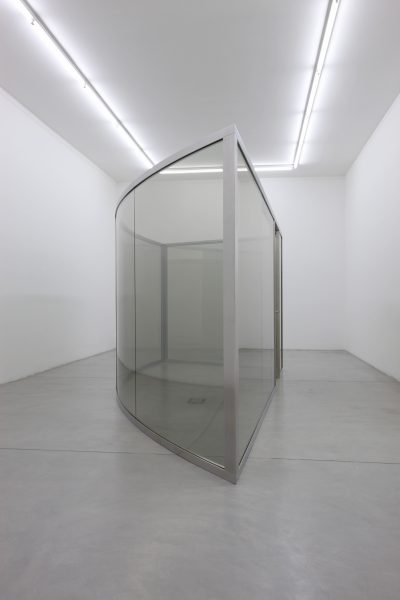 Sagitarian Girl, 2008Two-way mirror, stainless steel frame
Sagitarian Girl, 2008Two-way mirror, stainless steel frame
230×550×240 cm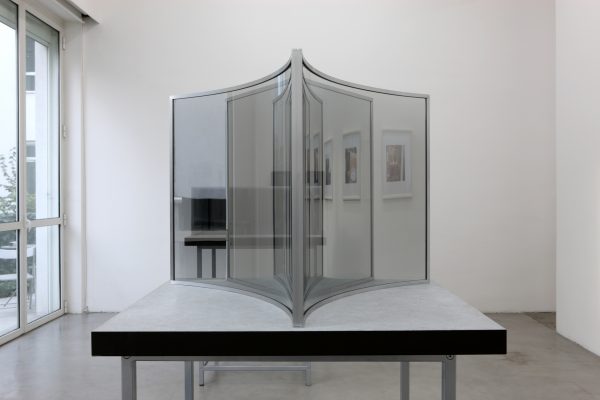 2 V’s, 2005Two-way mirror, steel, wood
2 V’s, 2005Two-way mirror, steel, wood
71×95×95 cm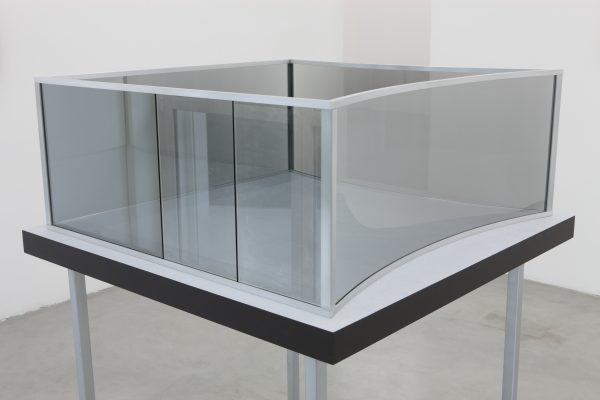 Half Square/Half Crazy, 2004Two-way mirror, steel, wood
Half Square/Half Crazy, 2004Two-way mirror, steel, wood
42×95×95 cm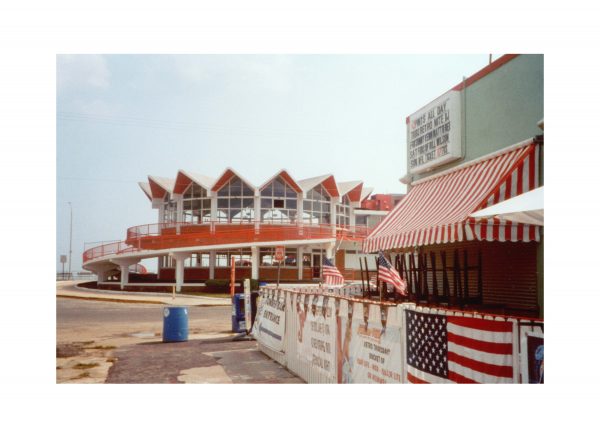 Plastic Floats on Highway Shore, New Belmar, New Jersey, 2006Polyelectronica print on c-type paper
Plastic Floats on Highway Shore, New Belmar, New Jersey, 2006Polyelectronica print on c-type paper
24×35 cm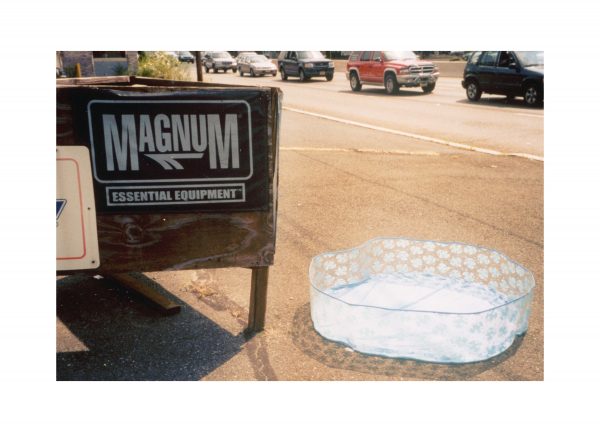 Small Backyard Swimming Pool Outside Store, New Belmar, New Jersey, 2006Polyelectronica print on c-type paper
Small Backyard Swimming Pool Outside Store, New Belmar, New Jersey, 2006Polyelectronica print on c-type paper
24×35 cm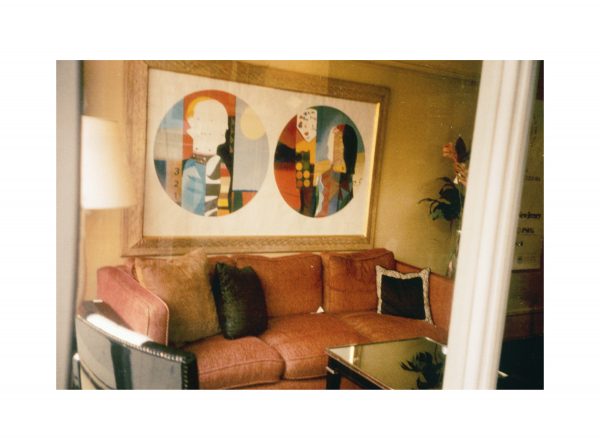 Living Room Furniture Inside Store Front, Paterson, New Jersey, 2006Polyelectronica print on c-type paper
Living Room Furniture Inside Store Front, Paterson, New Jersey, 2006Polyelectronica print on c-type paper
24×35 cm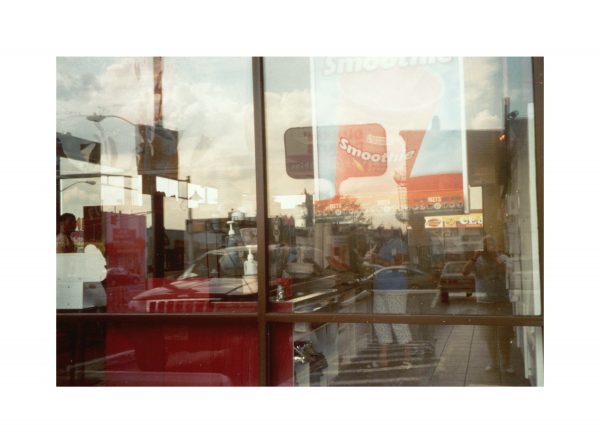 Dunkin Donuts Facade on Highway, Union City, New Jersey, 2006Polyelectronica print on c-type paper
Dunkin Donuts Facade on Highway, Union City, New Jersey, 2006Polyelectronica print on c-type paper
24×35 cm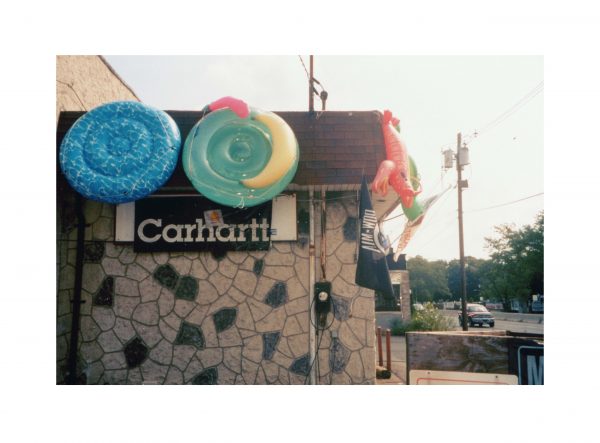 20’s Amusement Pavillion, Asbury Park, New Jersey, 2006Polyelectronica print on c-type paper
20’s Amusement Pavillion, Asbury Park, New Jersey, 2006Polyelectronica print on c-type paper
24×35 cm


























